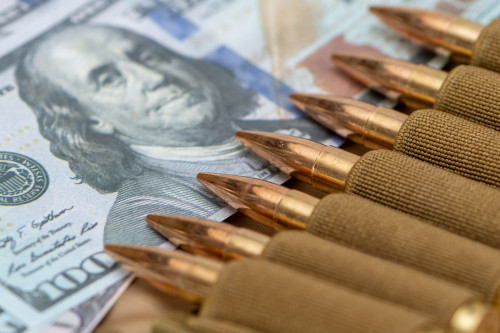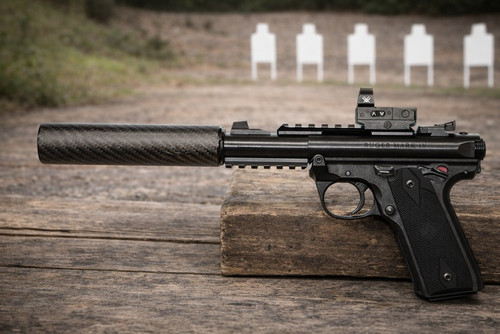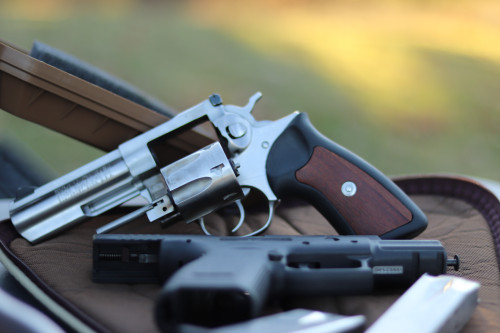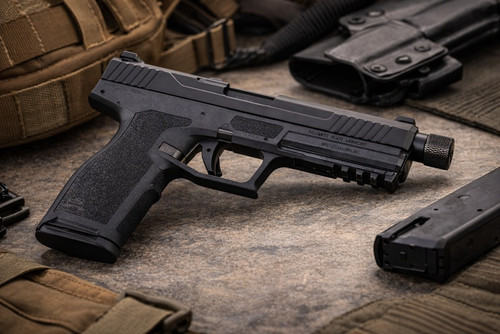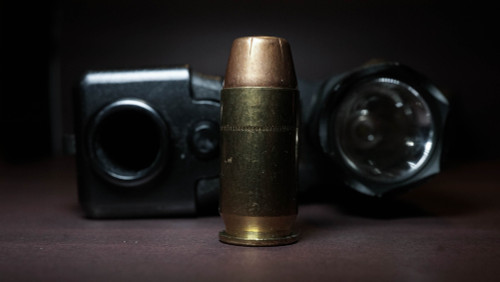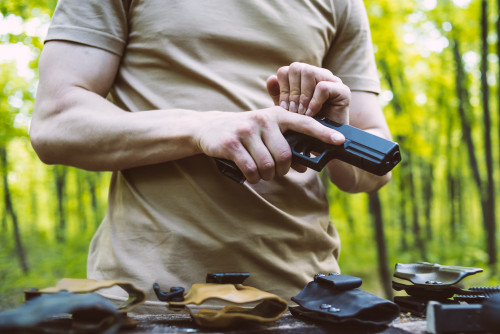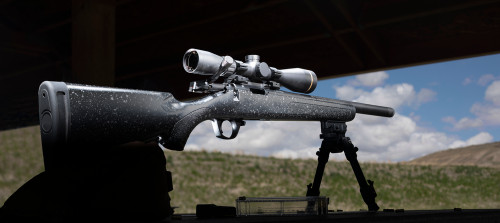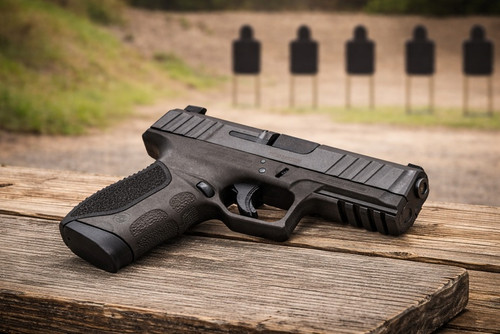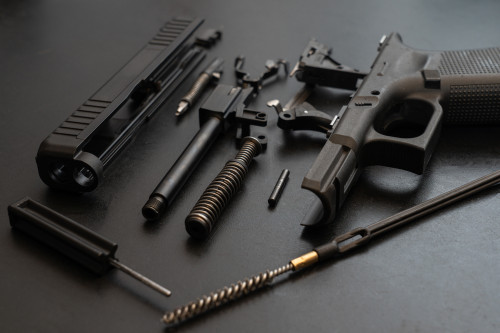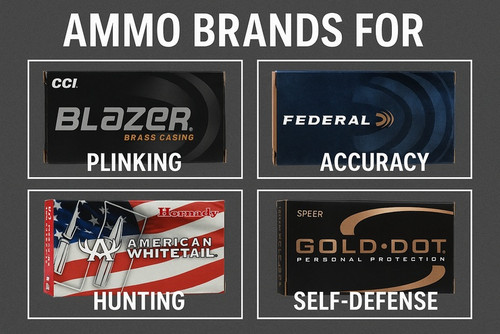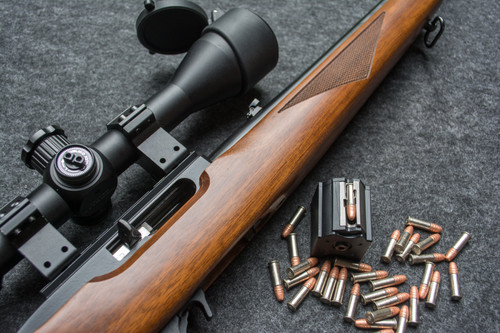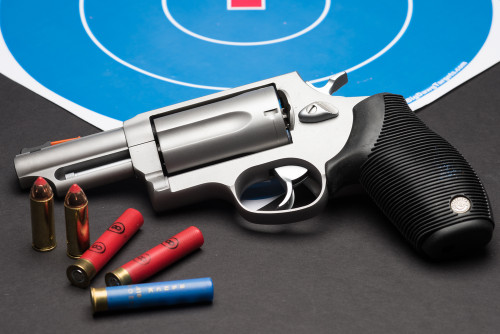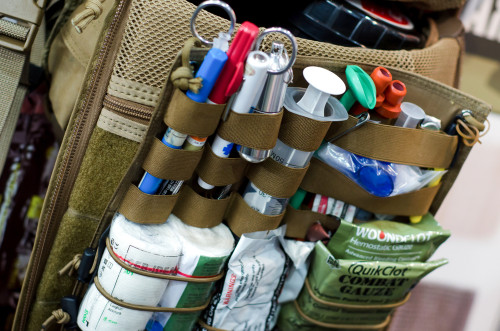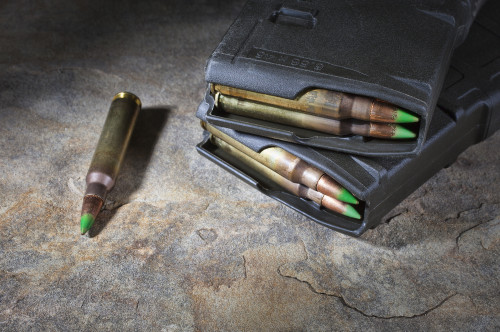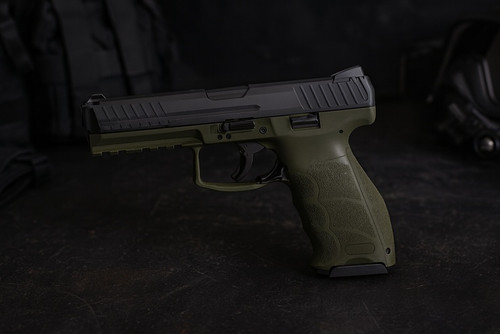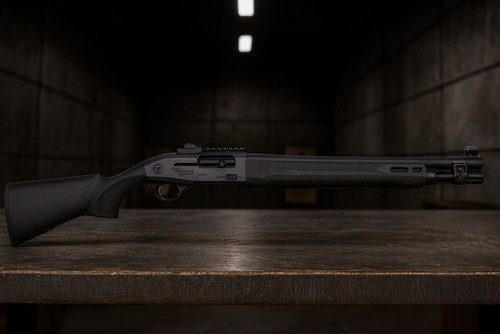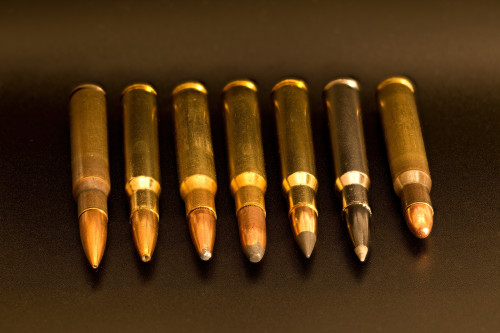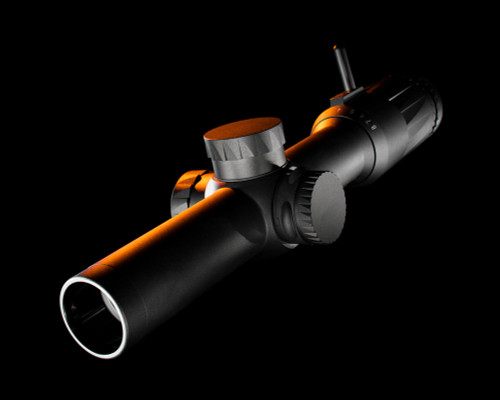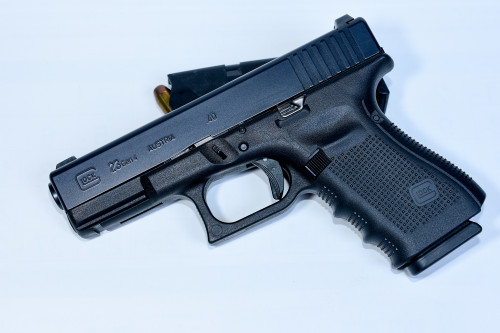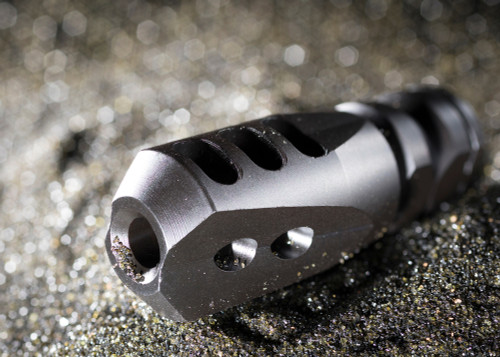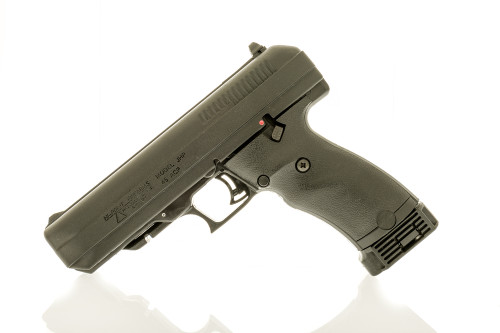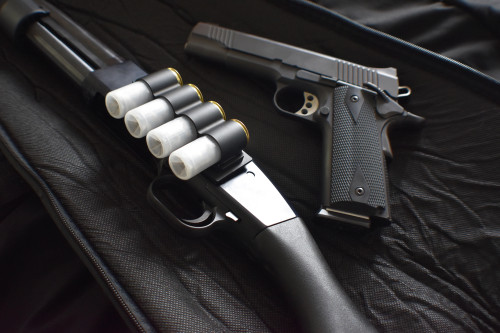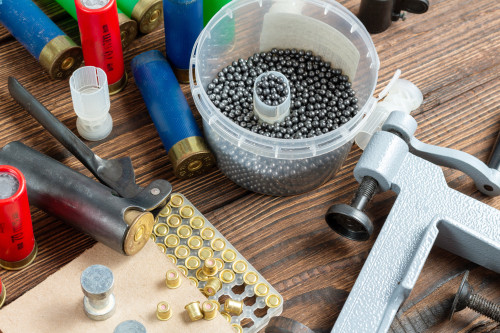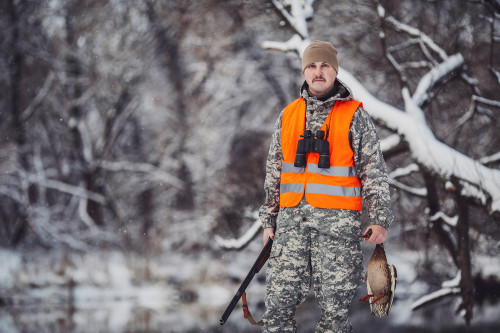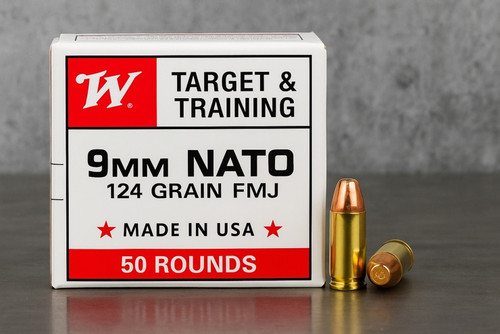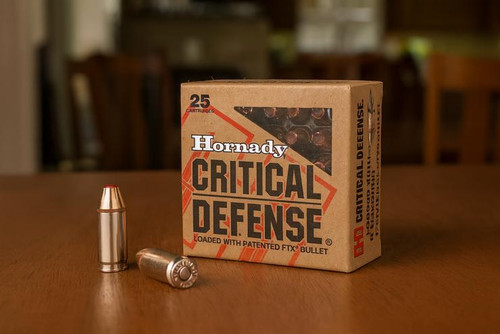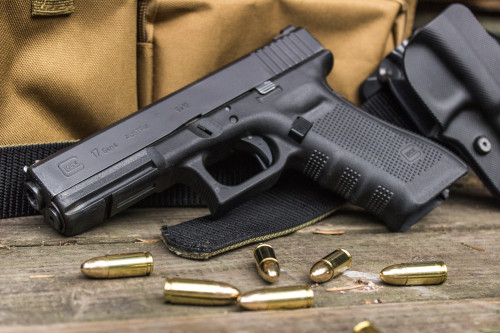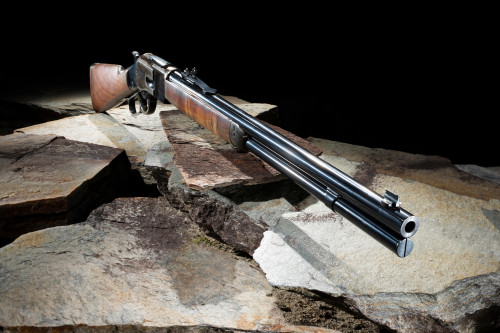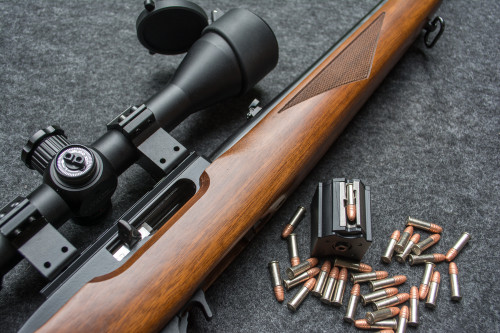By now, you’ve undoubtedly purchased your fair share of firearms — a 9mm pistol, an AR-15 rifle, a dedicated hunting rifle, and maybe even a 12-gauge shotgun. While some people have the forethought to buy bulk ammo (to feed all the guns in your arsenal), chances are you only buy ammunition as needed. After all, with prices this high, who can afford to stock up? Many shooters live magazine-to-magazine.
But what if ammo prices threatened to get even higher than they are now?
Several factors may contribute to this being a bigger issue than ever in the final stretch of 2024 and into 2025:
- The assassination attempt on a presidential candidate combined with the sudden withdrawal of another
- The general soapbox preaching concerning gun control around election day, when local gun shop shelves start looking a little bare
- Inflation and other news-worthy economic indicators
If you’re a long-time gun enthusiast, you’re probably thinking “Of course ammunition prices will rise. It always happens right around federal elections or whenever there is a tragedy involving a firearm.” You wouldn’t be wrong, either — and 2024 has all that (plus the uncertainty of global conflicts) in spades.
However, there is more to the science and economics of ammunition supply and prices than meets the eye. The availability of raw materials, the concentration of key component manufacturing in a few select hands, and the sheer “burn rate” of those materials (especially in regional and global conflicts) all have an effect on the price and availability of ammo in your favorite calibers.
So, let’s look at what drives these prices and how to make the best investment as ammo prices are set to rise.
The Basics of Ammunition Pricing
Modern ammunition is pretty complex. Your average 9mm cartridge is more than just metal and powder. The melding of metallurgy, chemistry, and physics makes the amazing cartridges we have today — with each involving a cost somewhere down the line.
First, there are the materials:
- The primer alone is a mixture of lead styphnate, barium nitrate, and antimony sulfide.
- Nitrocellulose, the modern form of what is commonly known as gunpowder, is a highly flammable mixture of the nitric esters of cellulose.
- The casing is usually brass, steel, or nickel-plated variations of both.
- The projectile itself is usually lead clad in copper, with some projectiles even coated in polymers.
Remember that modern bullets are the result of years of research and testing, so here’s a development cost to these as well. The people behind that have to get paid, after all.
Plus, the materials that make up modern ammunition have to be mined, processed and shipped. Even in more stable times, variables like labor costs, fuel costs, processing times and the like can influence the cost of ammunition.
For the most common elements, manufacturers have some cost fluctuations factored in (so they aren’t changing costs every time the price of diesel fuel rises or falls, for example). Coupled with normal inflationary pressures, the price of ammunition should be expected to rise slightly (like everything else) without any “wild” factors influencing it.
(Source: www.bizjournals.com)
Why Are Ammo Prices Rising?
As you’ve probably noticed, the price of goods and services rises over time, hopefully keeping pace with your paychecks.
For example, a rifle in 1934 cost $20, which is equal to about $470 today, which is about the cost of a lower-tier AR-15. That same year, the average monthly wage was $157, whereas today it’s around $5000. The math works out, most of the time.
So even though you see advertisements for ammo around $1.00 for a box, remember the purchasing power of the dollar changes over time. External factors also tend to drive the price of ammunition higher — with plenty of wildcards as recent examples.
The COVID-19 Pandemic: The Lingering Effects
In part, current ammunition prices were influenced by the COVID pandemic from 2020 to the latter part of 2021. Those years held the perfect storm of the virus, civil unrest, and a hotly contested federal election. The latter two are more predictable economic drivers of ammo costs, but COVID threw a big monkey wrench into both the industry and the global supply chain.
Many ammunition and firearms suppliers in our nation were forced to adopt stringent isolation and distancing procedures, whether they agreed with them or not. Many of them hold contracts to produce ammunition for the federal government. However, the feds made those contracts conditional on the adoption of strict COVID containment protocols (and vaccination mandates).
Implementing these policies caused a reduction in ammunition output — but without a reduction in demand. Citizens concerned about growing civil unrest and the looming 2020 presidential election scooped up firearms and ammo by the truckload. But the plants, dealing with worker shortages due to illness and mandatory quarantines, had a heck of a time keeping up with the demand. The classic supply-demand situation kicked in, with prices rising to match the demand over a smaller output.
To keep up, manufacturers also had to invest in more production equipment, and staffed their facilities around the clock to make up for capacity limitations.
Even after the virus subsided and the electoral chaos of 2020 faded, ammo companies still faced a steady demand. This was mainly due to the new presidential administration expressing interest in more gun control. Having invested in new machinery, new facilities, and new labor, the ammunition suppliers had to keep prices relatively high to recoup their investment dollars.
The Nitrocellulose Issue
The primary sources of nitrocellulose in the world are China and Thailand. While the US enjoys a cordial relationship with Thailand, we have a rocky one at best with China, regardless of the trade and political landscapes. China is also in close proximity to Thailand, and exerts influence on them. China will sell us nitrocellulose, but since they obviously know what it is for, they set the prices accordingly.
At the same time, COVID-19 originated from China, and their supply chain was severely disrupted during the pandemic, decreasing production, raising prices, etc. Classic economics strikes again.
Nitrocellulose (along with brass and the arcane materials in primers) is also used by larger varieties of ammunition. Consider the kings of the battlefield like 155mm artillery shells, which consume a whole lot of powder per shot, having to lob a 70+ pound projectile many miles downrange.
Both the United States and Russia are involved in supplying materials for a few ongoing regional conflicts. For example, we’re equipping the Ukrainian forces battling the Russians with artillery shells and small arms calibers like 5.56mm, 7.62x51mm, 7.62x39mm (usually via Poland), and 9mm. All that ammo requires a lot of nitrocellulose, and their “burn rate” is astounding.
At the peak of the war, the Ukrainian military reportedly consumed 10,000 155mm shells per day. Russian forces consumed around the same amount. Since China sells nitrocellulose to whoever has the money, both sides of the conflict were drawing from their supplies, thus driving up the price.
Global Conflicts and Wars
Unfortunately, the global politics of that war (and ongoing conflicts around the world) are straining the ammunition supply chain. While many of the combatant nations don’t produce their own ammunition, they source it from nations that do, like the United States. Our commitments to our allies around the world often affect the price and availability of ammunition here at home.
LCAAP and U.S. Military Contracts
One of the largest producers of ammunition in the US is the Lake City Army Ammunition Plant, aka the LCAAP. You’ve probably heard ammo nerds talk about “Lake City” ammo, and this is where it comes from. Currently operated by Winchester (but owned by the US government) the LCAAP supplies our military and allied militaries with all manner of small arms ammunition — with a healthy side business supplying people like yourself with ammunition like 5.56x45mm M855 green-tips for AR-15s.
Unfortunately, during heavy military commitments, plants like the LCAAP have to prioritize these contracts for continued financial health and stability. A company like Winchester will definitely prioritize a US government order to replenish the stock of 5.56x45mm in the military inventory over keeping commercial firearms retailer shelves stocked. Plus there’s the national security concern of keeping the military’s stash well-stocked.
Any leftovers sold to American armed citizens are priced accordingly, since their demand isn’t usually affected by commitments to foreign countries — even our allies.
As we noted, the ongoing wars consume ammunition at a staggering rate, and when the primary supplier of the basic propellant (nitrocellulose) of most ammo is a country that we currently have a strained relationship with, the supply lines are stressed again.
Other Ammo Suppliers and the Russian Embargo
To be fair, numerous smaller ammo suppliers sell exclusively to civilians, but for raw materials like primers and nitrocellulose, they buy from the same places used by the “big guys” like Federal, Hornady, and Speer.
Ironically, during times of supply chain stress, the solution used to be cheap Russian ammunition. Turned out by the billions in a wide range of calibers, Russian ammo often sports a steel casing (as opposed to brass). Steel-cased ammo is notably dirtier than American or European ammunition (owing to less-refined nitrocellulose and older-technology primers), but it’s damn cheap. For most people, a dirty gun is better than an empty one — and 1000 rounds of .223 for about $100 isn’t a bad deal during an ammo shortage. You couldn’t trust them for defensive use, but for training, plinking, and recreation? American shooters snatched them up.
However, with the war in Ukraine, the United States government slapped an immediate embargo on all Russian ammunition imports. If it wasn’t crated up and on the water bound for US ports, it was no longer welcome on our shores. Of course, even without an embargo, Russia’s command economy would have directed ammo production toward the Russian army anyway.
Fuel and Transportation Costs
Factors like transport costs can affect the price of ammunition. For example, global conflicts threaten the fossil fuel supply for the world — and for the most part, the global supply chain essentially runs on diesel, gasoline, and other petroleum products.
Whether it’s a train, truck, ship, or even generators powering machinery, they all take fuel, and these days, the fuel costs a lot more (just check your local gas pump). But the big transport modes by which ammunition and its raw materials are shipped consume way more fuel than your Honda Civic. That cost is passed on to you.
Labor and Production Costs
Higher demand puts a strain on the labor and production side as well. Ammunition producers, regardless of their customer base (government or citizen) have to invest in more equipment, production talent, and training time. They don’t do this for free, and the costs are passed down to you, the purchaser.
On top of that, some manufacturers hesitate to expand capacity (thinking the demand will cool, leaving them with idle machinery. Instead, they price their existing inventory higher, knowing people will pay just to supply themselves (especially in times of panic).
Along the same lines, manufacturers will sometimes invest in alternative technologies to ease the strain on existing raw material supply chains. Some of the bigger retailers are starting to stock polymer-cased (as opposed to brass) ammunition. Brands such as True Velocity Ammo have developed innovative and workable polymer-cased ammunition in common rifle calibers such as .308 Winchester and 5.56x45mm. However, since the technology is new, they have to recoup their research and development (R&D) costs, so their boxes of ammo have extraordinarily high price tags, ranging near $70 for 20 rounds of .308.
Local Events and Civil Unrest
Sometimes localized events will cause prices to surge, but in the end, it still comes down to supply and demand.
For example, if there’s a tragic shooting incident in the news where multiple casualties are reported, some lawmakers, public figures, and social media influencers will use the tragedy to “stump” for restrictive gun laws and attitudes. That’s when buyers “panic,” unsure if what they see on the shelves today will be there tomorrow. Whether it’s firearms or the ammunition that feeds them, the public responds accordingly.
We also saw this during the pandemic. Spurred by unfortunate police-involved situations, as well as a healthy dose of pent-up frustrations due to COVID lockdowns and the threat of further gun control during the 2020 election, that summer had several instances of civil unrest. People who normally didn’t ascribe to the mantra of “when seconds count, the police are many minutes away” were suddenly keenly aware of their own security situation, and chose to remedy it.
Modern rifles like AR-15s flew off of the shelves of gun shops, firearms instructors were working 12-18 hours a day, and ammunition in common calibers was even harder to come by. A supply chain strained by COVID and looming political pressures took another big hit, with many online retailers and local gun shops simply writing “SOLD OUT” across their inventory. Even if you were alerted about in-stock ammunition online, it would often be sold out by the time you clicked on the product you wanted.
Even our massive firearms industry couldn’t keep up with this “perfect storm”. Though the initial wave of unrest thankfully subsided, there has been a noticeable uptick as of late, as some protests concerning the conflicts in the Middle East have turned violent. Thus scarcity, driven by panic buying, drives up the price once again.
The Political Situation
For better or for worse, firearms ownership and the Second Amendment are insanely politicized in the United States. Some politicians and public figures advocate for stricter gun laws as part of their 2024 campaign strategy. Some even want to place ammunition under the same (or stricter) controls as firearms sold at retail. Imagine having to get a background check just to purchase a box of ammo, or waiting a week before you could even take it home.
Of course, the attempted assassination of a leading presidential candidate has done nothing to diffuse the situation, and the rhetoric swirling around the campaign trails has pushed ammo inventories even further into concerning levels.
While political pressures on firearms will be an eternal constant, we can approach November optimistically, knowing that the cycle will likely tone down afterwards, with prices leveling off or even dropping.
The Situation for 2024: Will Prices Go Down?
Like 2020, 2024 is a rather unique year. While thankfully we aren’t dealing with the uncertainties and chaos of a global pandemic, we are dealing with:
- Supplying our allies with weapons and ammo as they fight in unprecedented wars.
- A presidential election, which has seen one front-runner survive an assassination attempt, and the incumbent candidate drop out, ceding his campaign to his running mate (who is no friend of the Second Amendment).
- Potential civil unrest as a result of this election.
It’s little wonder ammo prices are already rising.
However, this was not entirely unexpected. At the beginning of 2024, companies such as Vista Outdoors (owner of Speer, CCI, and other brands) announced that inflationary pressures, as well as the shortage of nitrocellulose (due to the ongoing wars in Ukraine and the Middle East) would drive prices upward.
The very recent economic chaos of August 2024 has not helped the ammunition situation much either. People in a desperate economic situation may resort to theft or violence to make ends meet.
But in all likelihood, the situation will calm down, and prices may cease to rise (and even drop slightly), depending on the election and global politics. The winner of the election could push the various warring parties around the world to negotiate for a more permanent peace, thereby lessening the demand on our domestic ammunition suppliers. Or, they could attempt to enact stricter gun control laws to satisfy their base, which could keep us in the same situation we are now.
Good luck, folks.
How to Cope With Rising Ammo Prices
Without consistent training to ensure proficiency and safety, your right to bear arms becomes a danger. You are responsible for every round that leaves the barrel of your gun. To ensure those rounds go where you want them to go, you need to train, and train some more.
But while basic exercises can be done even with a box of 50 rounds, achieving true proficiency with advanced techniques (like shooting on the move) demands a substantial amount of ammo and dedicated range time. That’s why most instructors for defensive classes actually require you to bring 200 or 300 rounds of ammunition per caliber of the guns you intend to use.
So how do you keep training when the cost of ammunition keeps rising?
Luckily, the true American spirit thrives in crises such as these. To beat the sticker shock of modern ammo prices, it’s time to get creative and crafty.
Reloading or Handloading Your Own Ammunition
Some people handload their own ammunition from scratch, or reload it with used brass casings they have scrounged up. You may have even encountered a “brass goblin” at your local shooting range lingering around, asking people if he can grab their spent brass casings (even if the range discourages that sort of thing).
Handloading or reloading is ultimately a self-sufficiency skill. In the prepper community, it’s regarded as a real masters-level skill, regardless of cost. However, the cost is actually a hard equation to work out.
It can work in your favor if you really dig down into the costs of individual components and buy accordingly. For example, primers are currently expensive because there’s only a few factories around the world that really produce them. For gunpowder, the same supply chain issues that affect the factories will affect you.
That said, the pricing can change in a moment, so if you’re quick, you can buy “the dip,” and save a little over time. Occasionally the powder companies will offer bulk discounts if they have the inventory.
For less-common calibers, reloading can reap savings, especially if you are set up to trim brass casings. A lot of less-common cartridges have a “parent” cartridge in a more common caliber. For example, you can trim 5.56x45mm brass down to safely accommodate 300 BLK projectiles, if you shoot in that caliber. 5.56x45mm brass is insanely common, so you shouldn’t have an issue sourcing it — without resorting to brass goblin tactics.
Alternative Calibers
Having a knowledge of calibers outside of your norm is a good idea. It can also be a lot of fun. In times of panic, the first calibers to really get hit hard are the mainstays, such as 9mm for pistols and 5.56x45mm for AR-15s. So it’s wise to have a “Plan B” just in case things get really crazy and the common calibers are no longer available.
You might have a 9mm by your side, but if you really want to embrace the spirit of the American gun owner, you need to have a .45 ACP pistol in your inventory. Same goes for the .40 S&W.

Remington Umc Handgun 40 S&W Ammo 180 Grain Fmj 300 Round Bucket
$114.00
Remington
Prices accurate at time of writing
For modern rifles, it’s definitely worth your time to get to know 7.62x39mm, the primary caliber for AK-47 style rifles. Since Russian steel-cased ammo was imported in such vast quantities, there’s still plenty of inventory here in the US for your AK, even if it’s a little pricier due to the low likelihood of returning anytime soon.

Winchester Usa 762X39 123Gr Fmj 20/200
$17.69
Winchester
Prices accurate at time of writing
Explore Alternative Brands and Loads (for Your Favorite Caliber)
We all have our favorite caliber (and load). For some of us, Hornady 9mm 135 grain +P FTX may be our go-to load. For others, it might be the Speer 9mm 124gr +P Gold Dot Hollow Point.
However, both of these loads are duty rounds for law enforcement agencies around the nation. As we said, the government contracts often take priority over smaller citizen purchases, so your favorite round may not be in stock during troubling times (which is most of the time, these days).
That’s why it’s worth exploring “Plan B” in your favorite caliber. For example, some die-hard Gold Dot fans pick up more cost-effective (but still highly reliable) 9mm defensive loads from Ammo Inc. While not as street-proven as the Gold Dots, the Ammo Inc loads have proven effective in all manner of ballistics testing. Having ammo on hand that goes bang and works is better than none at all.

Ammo Inc. 9 Mm Luger Ammo 115 Grain Jacketed Hollow Point Signature Line
$14.29
Ammo Inc.
Prices accurate at time of writing
Buy In Bulk While You Can
Of course, it’s definitely worth your while to lay in a stash of ammunition to guard against future price fluctuations and supply issues. At the very least, you should have at least 1000 rounds of all your primary calibers on hand at any given moment, with a good mix of training and defensive ammo in that number. Don’t forget about extra magazines as well.
If you're looking to stay ahead of rising ammo prices, buying in bulk is one of the smartest moves you can make. By purchasing larger quantities now, you can lock in current rates and safeguard against future price increases.
Pro Armory has you covered with a selection of well-priced bulk ammo in the calibers you rely on most. From 9mm and .223/5.56 to .45 ACP and 12-gauge shells, we offer the ammo you need at prices that make sense.
Get Involved
It’s also good to actively participate in the firearms scene as a whole. Whether it’s joining an advocacy organization such as the Firearms Policy Coalition or the National Rifle Association, or getting involved in local training groups, spreading awareness of effective and responsible firearms ownership can reap long-term dividends. The more people involved, the more resilient and robust the firearms industry (and the supply chain) becomes.
The Long Term Outlook on Ammunition Prices
Recent unprecedented events have made predicting the pricing of ammunition in 2024 even harder. Attempted assassinations of political candidates, other candidates dropping out of the race, continued calls for strict gun control, and massive economic uncertainty are making concrete predictions more complicated for even the most seasoned industry insiders.
Are ammo prices set to rise? Yes. Will they continue to rise in 2025? Of course they will (at least to some degree). Inflation guarantees this. The hard part is to predict how much and how fast they will rise. Here are a few predictions:
- For better or worse, the pricing will hinge on the results of the elections in November. If the trend of victories leans towards more gun control, expect historic numbers of people to engage in panic buying (even if nothing crazy happens in the legal landscape).
- If the trend of victories leans more towards gun rights, there will likely be a brief blip of heavy sales (in celebration), which will decrease inventory levels a bit. However, the bounce back will be pretty nice, with retailers having plenty of inventory and even offering deep discounts to clear out excess inventory.
- The wildcard will be global conflicts. While certain candidates have expressed a desire to bring the warring factions into negotiations, other candidates have expressed the need for our allies to have decisive victories. Ironically, peace tends to be good for ammunition prices (and for basically everything else), so we can hope for these conflicts to draw to a close sooner rather than later.
(Source: https://en.wikipedia.org/wiki/5.56%C3%9745mm_NATO#/media/File:Ammunition_Belt_5.56_mm.jpg)
The Bottom Line on Ammunition Price Increases
2024 is proving to be a historically unique and unprecedented year not just for the firearms community, but for the entire world. Between the political drama, the potential for civil unrest, several global conflicts, and unpredictable economic numbers — a price increase in ammunition is perhaps the least of our worries.
But the situation can be managed, especially if you’re a smart buyer. At Pro Armory, we’re committed to providing you with the best online ammo shopping experience. We guarantee your online purchases are 100% secure, so you can stock up for whatever comes your way.
Be proactive about your ammunition purchasing, and take advantage of some of the lowest prices on the market in your favorite calibers. Browse our selection of ammo, ammo storage, and tactical gear today.

The Best Gun Deals, Coupons and Finds
Sign up for our newsletter to receive regular emails with the best deals, reviews, and updates from ProArmory.



